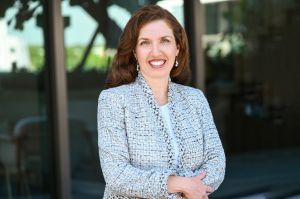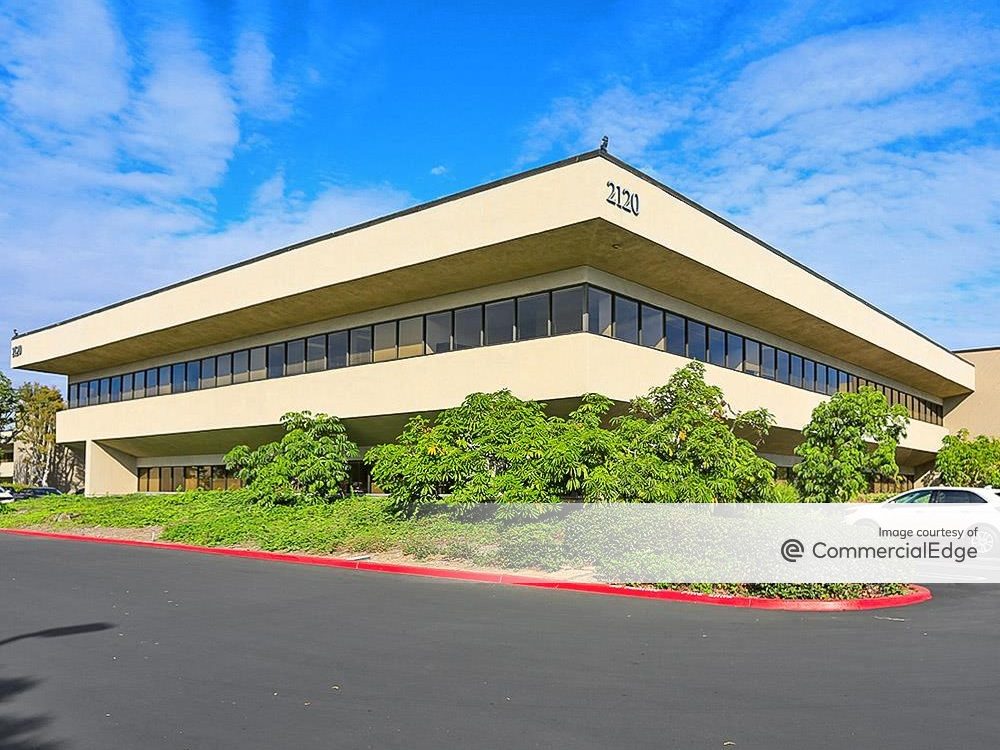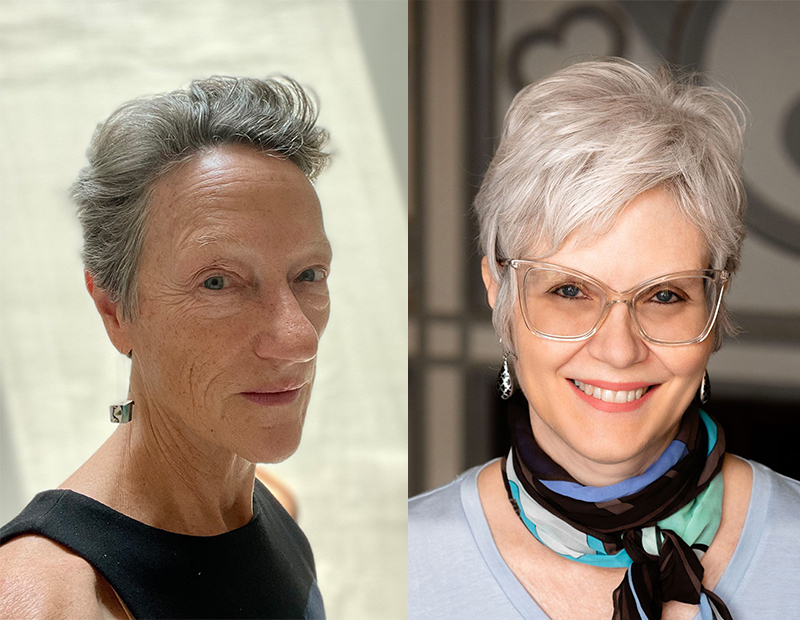“The threat of the self-fulfilling prophecy is real and capital inflows matter, so is the concern around headlines a justifiable fear? Yeah, I think so,” said Toby Cobb, co-founder and managing partner at 3650 REIT. “What the press says can change people’s behaviors for a period of time, and investment capital, frankly, is the most democratic of assets.”
And while it might seem strange for executives like Cobb to put so much importance on headlines, just last month, during an industry forum in San Diego, Mohamed A. El-Erian, former CEO and co-chief Investment officer of PIMCO, admitted that the biggest danger facing commercial real estate today is “the noise … and that contaminates everything else.”
Without trying to sound too hyperbolic, particularly four years after a global pandemic started, the interconnection between the nation’s commercial banking system and the $929 billion in CRE debt scheduled to mature in 2024 begs the medical question: Is contagion a serious threat?
Optimistic diagnosis
Today, the commercial real estate sector is often assigned human ailments when its health is diagnosed, ranging from having a cold to needing CPR. According to some experts, while the patient is currently ill, not everyone is convinced the issues are life-threatening.
“You read about negative headlines in commercial real estate portfolios, but I’m not convinced they tell the full story,” said Tom Rugg, vice president and co-head of U.S. large loans at CBRE (CBRE). “You can’t paint every asset class or the market with a broad brush. You have to look at performance and fundamentals, and the data shows certain assets are performing well in the current market.”
Michael Gigliotti, senior managing director and New York co-head at JLL Capital Markets, admitted that while parts of CRE, particularly office, might have “a couple of bad actors,” he’s not convinced there’s a doom loop at hand. If anything, Gigliotti said, there’s been dramatically increased investment activity now that values have plummeted, with sovereign wealth funds and global high-net-worth individuals eager to deploy capital.
“Everyone has a fear of missing out, the FOMO is real, and investors are looking for opportunities and they’re acting on opportunities,” said Gigliotii. “Because they worry that if they aren’t active at the bottom of the market, then they’re missing out on a generational opportunity.”
While noting that the democratic nature of capital makes it prone to the whims of hysteria and the catastrophizing of crowds, 3650 REIT’s Cobb also emphasized that no newspaper headline can keep investors away from CRE assets that are able to attract and retain tenants and generate cash flow.
“Isn’t now one of the best times to be an investor, when everyone else thinks the chips are down? Because that’s when you get the best risk-adjusted returns,” said Cobb. “In fact, I’m out there right now thinking that the risk-adjusted returns in commercial real estate credit are the best they’ve been for one of the few times in my lifetime.”
Greg Friedman, CEO and managing principal of Peachtree Group, said that the negative headlines and noise surrounding CRE are actually helping those players willing to make investments in a period of dislocation.
“It makes the field a little less crowded,” said Friedman. “People tend to be reactive to what headlines say, and, in a lot of cases, you’re able to find mispriced risk in favor of being an investor on the credit or equity side.”
For investors, the keys to making a killing in CRE have always been the federal funds rate — used by most investors utilizing short-term debt — and the 10-year Treasury — the risk-free benchmark for long-term or permanent debt. But the recent interest rate volatility (or nightmare) has made it all but impossible to accurately value most CRE assets with any sort of certainty.
At 5.33 percent, the federal funds rate is the highest it’s been since April 2007 (and 500 basis points above where it sat only two years ago), while the 10-year Treasury trades today at 4.1 percent, a level it crossed only once in the 13 years between 2009 and 2022.
“Short-term rates are up substantially and that’s causing a lot of balance sheet stress,” explained Friedman. “But where the 10-year [Treasury] lands over the next five years is more important to the underlying value of these assets beyond just debt costs, because you have to look at risk premium spreads above the risk-free rate. That’s how you value these assets, and it’s double to where it’s been.”
With so much interest rate uncertainty, the appetites of even the most adventurous CRE investors have remained muted, despite the courage of Cobb and others. Last year, national commercial real estate investment fell 52 percent to $348 billion — the lowest annual total since 2012, according to CBRE.
Even Friedman conceded that the intersection of CRE and commercial banking, where roughly 40 percent of capital markets debt originates, is potentially threatened by substandard loans that will require massive write-downs and force borrowers to either refinance at higher rates or give back the keys.
“Some headlines are real, and those issues across banking are completely real,” he said. “These regional banks and community banks have huge exposure to CRE and they are under major pressure right now, especially regulatory pressure.”
The banking problem
If the threat of contagion truly exists for commercial real estate, it will be found not in newspapers but on balance sheets, primarily bank balance sheets.
For Columbia Business School’s Stijn Van Nieuwerburgh — the real estate finance professor whose June 2022 research paper written with New York University and Columbia colleagues warned of an “office real estate apocalypse” and an “urban doom loop” — the big problem is who will provide the capital to refinance $929 billion in CRE debt maturing this year (or the $2.81 trillion maturing through 2028, according to Trepp).
“Banks have been told by federal regulators to ease off on lending to CRE, and they heard that message loud and clear, and there is less appetite to lend,” said Van Nieuwerburgh. “There are new sources [of capital] being raised through distressed vehicles, but the first point, if you sum that up, is that it’s nowhere near $1 trillion. And that’s expensive rescue capital, it’s more expensive than traditional bank mortgages, it’s last-resort capital.”
There is no question that CRE sponsors need debt and equity infusions. A December 2023 paper from the National Bureau of Economic Research argued that 14 percent of the $2.7 trillion commercial real estate loan market — and 44 percent of office loans — currently carry outstanding loan balances higher than property values and are at risk of immediate default.
A 10 percent industry-wide default rate of CRE loans would cause roughly $80 billion in commercial bank losses; a 20 percent industry-wide default rate of CRE loans would lead to $160 billion in bank losses, according to the report.
But banks, on the whole, have been reluctant to take losses or extend new loans, in turn freezing deal flow for present and future CRE transactions. Only $28.2 billion of loans converted into commercial mortgage-backed securities were issued in 2023, the lowest total since 2011, according to Trepp.
“Loss aversion is a main psychological factor for humans, and there’s just not a robust debt market to provide liquidity for big deals,” said Peter Stelian, CEO and co-founder of investment manager Blue Vista. “Anytime you have a loan above $50 million, on the banking side, that’s a loan that has to be syndicated, and you need multiple banks to provide the financing.”
So, in a frozen deal market, owners of many office properties are instead putting money into tenant improvement packages and leasing commissions to re-tenant their unpopular space, while banks, ever cautious, are willing to “extend and pretend” to avoid the embarrassment of large write-downs or the pain of taking control.
“Banks, in general, don’t want to foreclose on those assets because they don’t have an asset management team and they don’t want to put capital into them,” explained Stelian. “And what happens is they become zombie assets because leasing brokers don’t want to show buildings owned by banks because they aren’t confident the bank will still be there to provide leasing commissions and tenant improvements.”
Stelian added that many banks tend to be public companies, and all the fear around CRE assets impacts how shareholders view and value those banks. That subsequently impacts the lending behavior of those same institutions going forward.
This mutually destructive fear cycle around asset values, share prices and lending patterns is precisely the risk Columbia’s Van Nieuwerburgh refers to when he cites the potential of a doom-loop in commercial real estate.
Van Nieuwerburgh painted an ugly picture of a downward spiral occurring when the loans extended in 2021, 2022 and 2023 come due down the road in 2025 or 2026, amid potentially challenging economic conditions, when future loan extensions will no longer be viable and property values haven’t recovered because industry fundamentals remain weak. It is here banks would finally recognize write-downs and engage in foreclosure sales.
“If you have a lot of foreclosure sales at the same time, and there are not willing buyers, then the prices are low — those are fire sale prices,” explained Van Nieuwerburgh. “One bank selling buildings for less causes negative externality on other banks who have to sell at a low price, too. Their books are now marked on property values that are out of date, so they make write-downs and that causes trouble in the banking sector and prices keep on spiraling and bank health keeps on spiraling down with them.”
If there’s one saving grace in all this, it’s that there are few lenders, if any, who have extreme concentrations of their loan book devoted to office, according to Kevin Fagan, head of CRE economic analysis at Moody’s.
A lender’s loan book is at most 25 percent office originations, an amount that is extreme even for a majority of CRE lenders because they tend to focus on multifamily originations, he added. Moreover, any contagion event would require there to be concentration of office ownership and, by and large, the concentration is limited to only a few big players, namely the public real estate investment trusts, or REITs.
“The bulk of the market doesn’t have an existential issue. There’s going to be a continuation of usage of office in the market,” said Fagan. “So I think what we’re very likely to see this year is noise around individual assets having issues and noise around lenders who have business issues on top of their exposure to poor assets.”
This inability to separate the greater universe of commercial real estate from the troubled office sphere is primarily the source of public misconceptions and faulty assumptions about the health of the larger network of CRE assets, according to Xander Snyder, senior real estate economist at First American Financial, a financial services firm.
“There is no such thing as a single market because there are multiple asset classes, so I think the media is probably painting commercial real estate with a bit of broad brush,” said Snyder. “Industrial is performing differently than retail, retail is performing differently than multifamily, and multifamily is different from office. … It can be a little confusing for folks who aren’t aware of the specifics.”
Where’s the risk?
The easiest way to separate the facts from the noise is to step back and take the 30,000-foot view, flying over the board and charting the different avenues of CRE across asset classes and cities.
The first truth that becomes apparent on this short but safe flight is that yesterday’s assumptions often don’t hold true today. Case in point: retail.
“If you talk to retail folks, there’s no doom and gloom in the retail space whatsoever. That’s all in the rearview mirror,” said Tom Traynor, vice chairman and co-head of U.S.large loans at CBRE. “They went through a challenging period there during COVID where e-commerce was the way of the future and we didn’t need brick-and-mortar retail — and that, obviously, proved false.”
Traynor said clients of his are getting positive leverage through all the different components of retail, whether that’s fortress malls or power centers or grocery anchors. He added that a similar story is happening within hospitality and hotels across the United States.
“No one was traveling for a full year after COVID, and that had a massive impact on the hospitality space,” he said. “But you’ve now had people who were kind of unleashed in the last couple of years and you saw the tourism effect in the U.S. and around the world, and the performance in the hotel sector has just come flying back.”
Even within industrial, an oft-overlooked sector, the growth of AI technology and cloud computing has fundamentally supported the continued and strong growth of data centers, according to CBRE’s Rugg.
As for multifamily and office, the pre-COVID darlings, so to speak, each experienced unprecedented distress due to shifting societal patterns and sudden interest rate movements. Yet, even those asset classes have their bright spots amid challenging headwinds.
JLL’s Gigliotti characterized the multifamily sector as “stressed, not distressed,” and emphasized that many of the issues impacting investors across the sector have been caused by cap rate increases that have cut investment values and complicated refinancings or planned sales from those looking to flip properties at a low basis.
“Multifamily is priced yearly with respect to the end user. You get new rent every year, unlike a hotel which is every day, and office which is every 10 years,” explained Gigliotti. “So multifamily is quick to change and is susceptible to interest rate and cap rate movements. We expect most of that [stress] to get solved with a reduction of interest rate spreads or index movements.”
David Perlman, managing director of originations at Thorofare Capital, said that those multifamily investors or sponsors who hope to recognize gains over the next three to five years through buy-and-flip will likely have trouble compared to those investors with a long-term horizon on their buy-and-hold strategies due to the new underwriting realities courtesy of Fed Chairman Jerome Powell.
“That game is over: you’re not going to get cap rate compression, you won’t be getting massive jumps in rent,” said Perlman. “Acquisition deals that have cash flow and have term to them can still get financed and raise capital in this market.”
In fact, the multifamily landscape isn’t entirely different from office in terms of how the negative assumptions made around a struggling asset class fail to paint a conclusive picture.
“It’s being blown out of proportion,” said Michael Lirtzman, head of office agency leasing at Colliers (CIGI). “As an asset class, there are headwinds facing office, but the underlying story is far more nuanced because a lot of the positives are being understated.”
For one, in the decadelong runup to the great office crash of the 2020s, an ocean of capital financed anything and everything in the sector, leaving some sponsors today holding portfolios full of office buildings in unpopular suburban locales that carry high vacancies and need tenant improvements. Those might be functionally obsolete, but there remains an enticing grove of fruit where the bravest investors can deploy capital accordingly to pick choice office assets.
While there’s risk from the debt maturing around severely depressed office values, there’s also an opportunity for equity and credit to be utilized in ways that save capital stacks and reposition assets supported by good locations and strong rent rolls, according to Lirtzman. To boot, the last two quarters have seen a more consistent return to office by American workers and an increased appetite by private equity and institutional investors to stick their toes back into the central business district waters, he added.
“While interest rates might be a little higher, and proceeds might be lower, we are starting to see lenders put out debt on office on the highest-quality assets,” said Lirtzman.
As for which cities hold the keys to separating fact from fiction amid the static of fearmongering, several CRE executives repeatedly cited San Francisco and Miami as case studies for understanding the deeper nuances of asset classes and their regional factors.
The Golden Gate City, much like the greater Bay Area, has been labeled a poster child for CRE’s sudden decline. However, according to Kyle Jeffers, chief investment officer at Acore Capital, San Francisco has been ahead of the curve in resetting the basis of its CRE assets.
“You’re seeing trades in San Francisco at a basis that have reset from historical highs. And, once you start to get that base level of value, then you can figure out where the value of buildings are,” said Jeffers. “It’s a high data market: When things go up, they go up fast, and when they go down, they go down fast. But it seems to be settling in. I personally believe in San Francisco.”
To illustrate: Michael Shvo’s $400 million purchase of the iconic Transamerica building in Downtown San Francisco, and Blackstone and Paramount Group securing an extension of their $975 million loan secured by the One Market Plaza office property.
And not only is artificial intelligence spilling over into every sector of the city, as Silicon Valley experiences its third tech boom wave of the last 40 years, but San Francisco’s struggling retail sector also appears to be turning a corner. That’s in part thanks to a $237 million California measure aimed at preventing retail theft and the $63 million sale of 40 Post Street in the upscale Union Square neighborhood.
Then there’s Miami, the beachfront paradise that was everybody’s favorite destination during the pandemic, but which has since discovered what happens when an onslaught of supply in multifamily begins to depress rents, and a once red-hot office market experiences sluggish leasing and construction starts (evinced by the struggles of Related’s One Brickell City Centre to secure an anchor tenant amid stalled construction).
Even so, 3650 REIT’s Cobb insists that Miami, particularly the luxurious Coconut Grove neighborhood, has more than enough to offer CRE investors frightened by negative headlines.
“The demographics here are great, the government has been business-friendly, the lack of personal income taxes has created a pro-business environment, and an inflow of business has made Miami a very, very attractive place to investors and lenders,” said Cobb.
But it’s not all roses across America, primarily in the nation’s capital. Washington, D.C., is a city where the noise and headlines tell an accurate tale that is struggling to find a happy ending.
Perhaps no central business district has been hit harder by hybrid work than Washington’s, where a huge swath of office space has been largely vacated by the General Services Administration, the federal government’s civilian real estate arm, since March 2020. As the Biden administration dithered on mandating federal employees return to the office — waiting until August 2023 to urge Cabinet secretaries to increase in-person work requirements — the capital’s office market, and much of the retail that relies on it, were left to wallow.
D.C.’s office availability rate reached a high of 22.3 percent late last year, according to Savills.
One other issue working against Washington: height. No building can be taller than 160 feet (due to the 1899 Heights of Buildings Act), forcing developers of multifamily and office to build wider, stockier buildings with low ceilings and awkward floor plans.
“Because of that height restriction, developers have historically tried to cram in another floor under that height, so they have these low ceilings that people don’t like,” explained JLL’s Gigliotti. “So the high-quality buildings are few and far between.”
And it is that formula — quality and marketplace, facts and history — that will determine the future of commercial real estate in the years ahead. Not noise, rumors or even, dare we say, headlines.
Brian Pascus can be reached at bpascus@commercialobserver.com.













